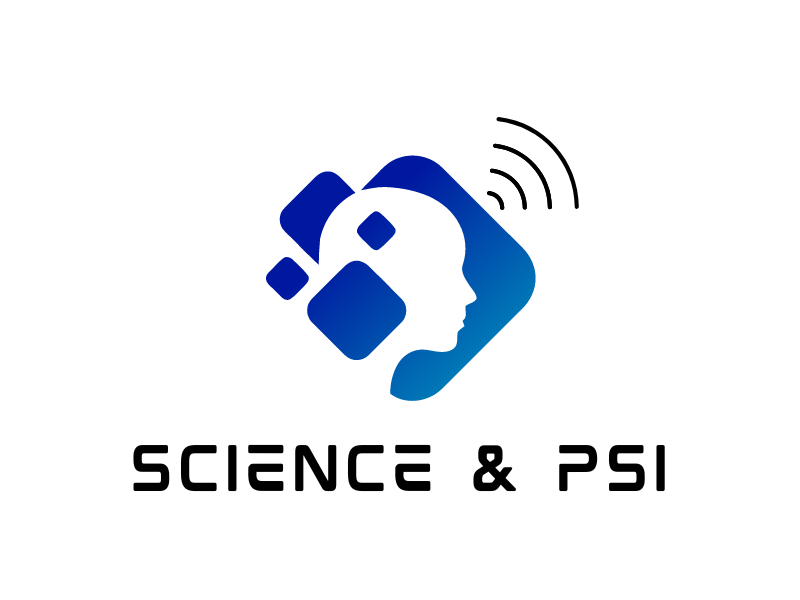Mental health is finally getting recognized as something we need to care for daily, not just in crisis. Gen z and millennials are beginning to recognize good mental health hygiene should be incorporated into their daily routine. Investing in mental health requires effort, but similar to physical fitness it will show eventually.in the digital age of nonstop news, political stress, and social media, many people find themselves overwhelmed by decision fatigue, anxiety, and short attention spans. The next breaking news or notification on the phone could potentially send you spiraling. Pop psychology is everywhere now. Many of us have self diagnosed ourselves with some disorder after relating to a symptom on a social media post. What often gets missed is that many of these “symptoms” are actually normal responses to a society that was never designed with human nervous systems in mind.
The upside? We are all aware there’s something wrong with a toxic society. We’ve become intellectually fluent in mental health lingo. We can rattle off acronyms like CPTSD, GAD, MDD and know exactly why we feel the way we do. The downside? Knowing the terms doesn’t stop the repetitive cycle of thoughts or how it shows up physically in the body. We can chat gpt morning affirmations but no matter how much they are reinforced we may feel silly and self doubt. Because we haven’t gotten to the root of the issue. That’s where somatic therapies come in. These body centered approaches emphasize the inseparability of mind and body, drawing on insights both from modern neuroscience and from traditions around the world that have long recognized how trauma and stress live in the body. I find myself recommending this therapy for people that don’t feel like talk therapy has been productive. It’s for the intellectuals and philosophers.
What Is Somatic Therapy?
Somatic therapy is a body centered approach to healing that emphasizes the inseparability of mind, body, and lived experience. The term somatic derives from the Greek soma, meaning “living body.” Yet the principles behind this approach have been practiced across cultures for millennia. Many Indigenous, African, Asian, and other world traditions have long recognized that trauma, stress, and emotion are carried in the body, and that meaningful healing must address the whole person. It’s considered an umbrella term rather than a specific method.
Unlike traditional talk therapy, which often focuses on thoughts and verbal processing, somatic therapies see the body as a key part of healing. It works with practices like breathwork, gentle movement, and body awareness to help release built up tension, calm the nervous system, and create a sense of safety. At the core of this approach is the nervous system, which guides how we respond to stress and how we recover after challenges. The autonomic nervous system, made up of the sympathetic (“fight or flight”) and parasympathetic (“rest and digest”) constantly shifts depending on whether we feel safe or threatened. When this system gets stuck in high alert or shutdown because of chronic stress or unresolved trauma, people may feel anxious, on edge, emotionally reactive, or disconnected. Somatic therapies help bring the body and mind back into balance, making it easier to feel grounded, connected, and resilient.
Historical Roots & Global Traditions
Yoga is deeply rooted in Indian philosophy, and extends far beyond physical exercise. Shaped by Vedānta and Sāṃkhya traditions, it views the material world as māyā an illusion and directs practitioners toward union with pure consciousness. At its heart lies prāṇa, the vital energy or life force that animates all beings. Through breathwork (prāṇāyāma), postures (āsana), and meditation, yoga cultivates the regulation of prāṇa, harmonizing body and mind with elevated states of awareness. Tai chi and qigong, rooted in Daoist and Confucian traditions, emphasize the flow of Qi the vital life force, as essential to existence. Their movements are more than physical exercise; they serve as practices of attunement, harmonizing inner energy with the surrounding environment. Meditation, practiced worldwide, recognizes that ordinary perception is limited and cultivates disciplined awareness as a path to deeper truths of existence.
Modern Development
In the 1970s, Thomas Louis Hanna introduced the idea of somatics, which focused on using the body to support mental health. His thinking was influenced by phenomenology and existentialist philosophers who challenged the dominant western paradigm of science, from Descartes, that the mind and body are separate. Hanna noticed that these philosophers shared similar insights with traditions like Hinduism and Zen Buddhism, which emphasize inner experience and living truth rather than just knowing it. For Hanna, what mattered most was direct experience. He even described himself as a “happy existentialist.” Hanna believed that many cases of chronic pain come from what he called sensory-motor amnesia, when the brain forgets how to properly control certain muscles. He argued that with education, mindfulness, and intentional movement (similar to physical therapy), people could retrain their nervous system, restore better mind-body connection, and find relief from pain.
Somatic Experiencing: This type of training was developed by Peter A. Levine, Ph.D which partly came out of Jungian therapy. Somatic Experiencing guides clients to gently track internal bodily sensations (interoception) and external sensory cues (exteroception) to build awareness of how trauma is “held” in the nervous system. The therapist helps clients notice subtle shifts in physical states, such as changes in breath, muscle tension, or temperature, and then facilitates the gradual release of residual survival energy that has been “locked” in the body. This process, often referred to as titration and pendulation, emphasizes moving slowly between states of activation and calm, thereby allowing the nervous system to renegotiate past experiences without becoming overwhelmed. For example, A client that is recalling a horrific past event may feel a sense of tightening in their chest. Instead retelling the whole story, the therapist guides them to focus on the tension in their body and redirect to small manageable doses to process.
Sensorimotor Psychotherapy is a body-centered therapy created by Pat Ogden, Ph.D. It combines somatic awareness (noticing the body) with cognitive behavioural therapy and neuroscience. The method is based on the idea that trauma and attachment experiences are stored not only in the mind but also in the body. Because of this, bodily sensations, posture, movement, and other nonverbal signals are seen as central to both understanding and healing distress. In a session, the therapist may help the client notice how their body feels or the way they are sitting while talking about a memory or emotion. Instead of focusing only on retelling the full story of the trauma, the therapist guides the client to stay in the present moment with their body. They may try new postures, grounding techniques, or slow movements that create a new body memory, helping the client relax and challenge old trauma responses.
The Hakomi Method is a body centered psychotherapy created by Ron Kurtz in the 1970s. It blends Western psychology, systems theory, and Eastern philosophy. The approach is based on five core principles: mindfulness, nonviolence, organicity (trusting the natural healing process), unity (the interconnectedness of self and environment), and mind-body holism (recognizing that thoughts and emotions appear in the body). In practice, the therapist provides a safe space where the client enters a mindful state and notices body sensations, emotions, images, or memories that arise. These experiences often reveal unconscious patterns or core beliefs formed in childhood. Rather than analyzing them, the therapist helps the client directly experience and gently explore new ways of being, which can lead to integration and healing. For example, if a client feels tension in the body while talking, the therapist might encourage them to stay with that sensation and observe what thoughts, feelings, or images come up.
Training and Practice Today
There are many somatic therapies with different approaches that use the body–mind connection in healing. Other forms can be seen in Trauma Release Exercises (TRE) and Bioenergetics. Somatic therapy itself isn’t a degree program. To diagnose and treat mental health conditions, a person must first be licensed as a counselor, psychologist, or other mental health professional. Many trauma-informed therapists choose to add somatic training and certifications to support their clients. In addition, professionals such as social workers, occupational therapists, and physical therapists may pursue somatic training to expand the ways they help people heal.
Cultural Respect & Ethical Use
It’s completely valid to practice traditions like yoga, meditation, Qigong, or martial arts for their therapeutic benefits. But it’s also important to remember that these practices come from communities with deep histories and philosophies. Learning about their roots is a way to honor the people who created and preserved them. Many of these traditions also carry teachings and safeguards that help keep them balanced and safe. When those elements are ignored, the practices can lose their depth and, in some cases, even become harmful.
Cultural exchange itself isn’t the problem. Human societies have always learned from one another. The issue is erasure: when traditions are taken without context, stripped of meaning, and the communities who carried them forward are left out of the story.
For people drawn to idealism, panpsychism, animism, and similar philosophies, these teachings often feel especially meaningful because they resonate with worldviews that see consciousness as fundamental. Meanwhile, those who lean toward physicalism may find more benefit in practices like Pilates, hiking, or box breathing, which promote health and focus without relying on cultural or philosophical frameworks. Whichever method one utilizes in order to achieve emotional and mental balance, what remains most important is recognizing just how important it is to do so.
References
Bradford Bennett (2020) The Somatic Work of Thomas Hanna, Tai Chi, and Kinesiology. Human Kinetics Journal,
Kuhfuß, M., Maldei, T., Hetmanek, A., & Baumann, N. (2021). Somatic experiencing – effectiveness and key factors of a body-oriented trauma therapy: a scoping literature review. European Journal of Psychotraumatology, 12(1). https://doi.org/10.1080/20008198.2021.1929023
Ph.D., O. P., & Fisher, J. (2015). Sensorimotor Psychotherapy: Interventions for Trauma and Attachment (Norton Series on Interpersonal Neurobiology) (Csm ed.). W. W. Norton & Company









